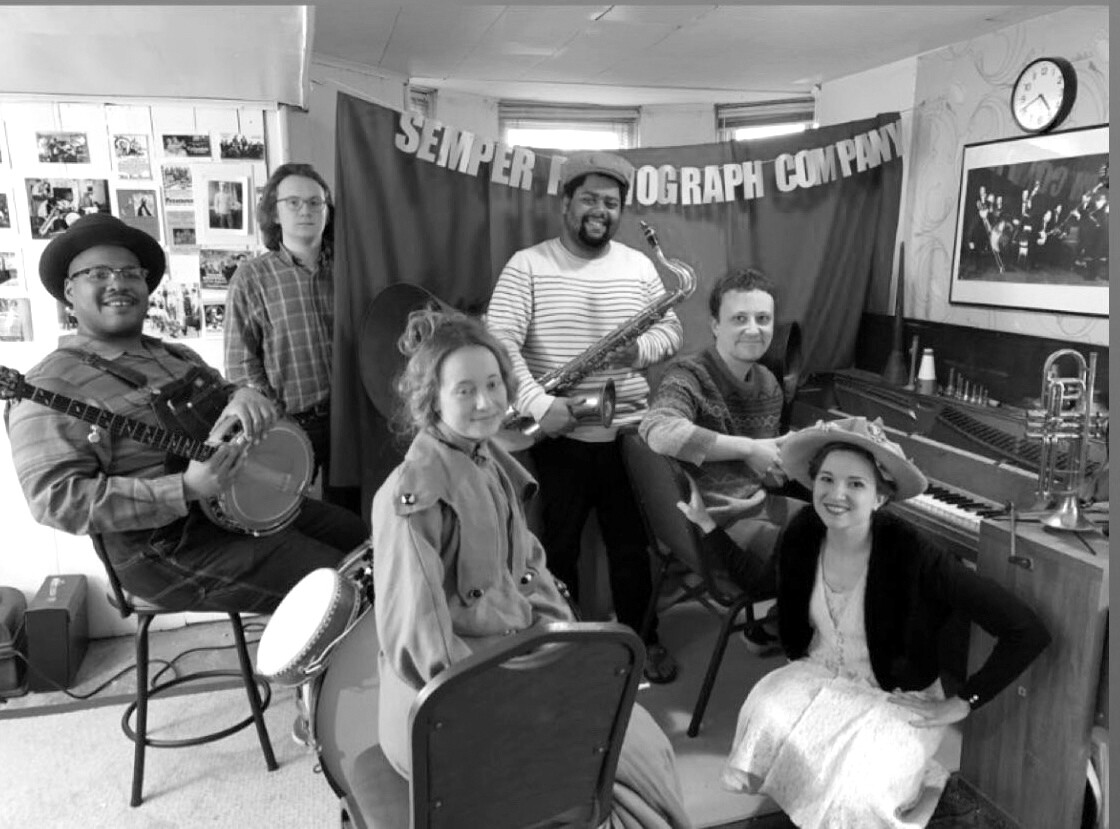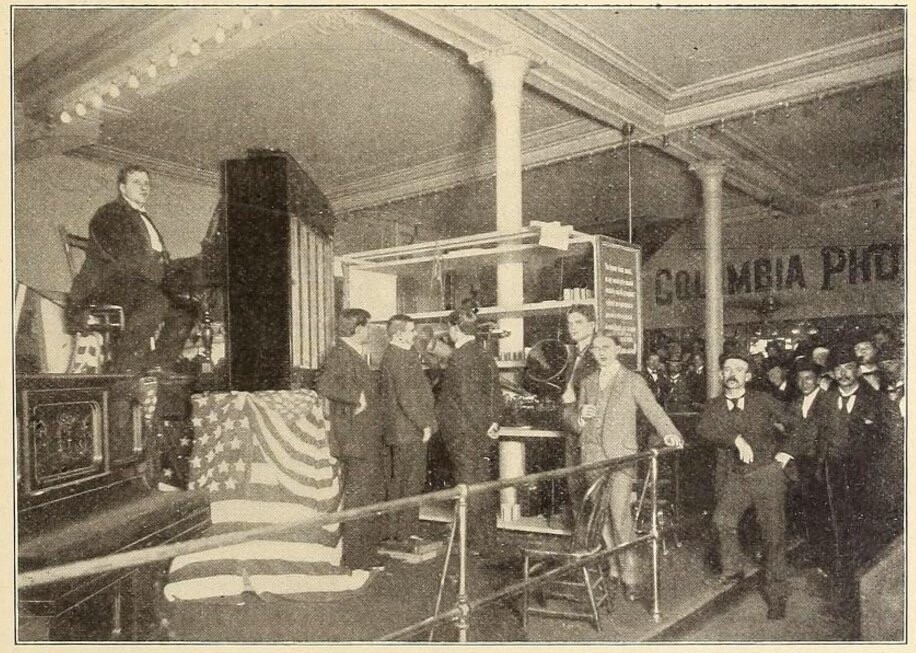While in New York City back in march, I had the chance to make a few disc records for Colin Hancock with his period acoustic setup. Even though I have been studying the methods in which records were made for over a decade now, the process they were originally made continues to baffle me. There is something so amazing and inspiring about the acoustic recording process. The process in which these were made was nothing new to me, but something about stepping into the space and environment that all of my favorite historical figures once stood really hit me. Making acoustic records is something that most people who read this publication will well understand. It’s a relatively simple process that is basically the reverse of how we listen to the records. No microphones, very minimal electricity, and a lot of experimentation led to these recordings made before 1925.

And before this afternoon, I had made several records before then. Back in 2017, I made a brown wax cylinder of a piano solo, in the sweltering dry heat of the Sutter Creek ragtime festival. Along with a few others that readers will recognize (John Reed-Torres and Adam Swanson among them), we made these records with very minimal equipment and setup. We only had a single small phonograph, a recording reproducer, a long horn, and a very well played grand piano. From how spontaneous all of it was, it seemed that the records wouldn’t turn out, but they actually are among the best ones I’ve heard in modern times. Again in 2018, I made a few more, turning out just as well as the previous ones. Most of us young ragtimers have experimented with this remarkable process, as most of us have a functioning phonograph and reproducing recorder. It’s not hard to do yourself, as many period performers demonstrated. A great example of this was Silas Leachman.
Leachman made his way into the phonograph business by making records at home. He would sit at the piano in his parlor, set 3 or 4 phonographs on the piano lid, and hook them up to batteries to keep them consistently moving. Many early recording stars started exactly like this, Len Spencer and Fred van Eps being two others. What really stuck with me this time was the amount of work that would go into making only a single record. Before this time, I hadn’t the time to process how exhausting this method was.
Aside from the afternoon with Colin, Miss Maybell, Charlie Judkins, “Blind Boy” Paxton, I actually had quite an adventure even before the fun started. The morning I awoke in what was a rather strange place, the final home of James Alexander Hager, Fred Hager’s younger brother. I will get into more detail on the two days that led up to this in the next article, as it was the most memorable part of this packed seven-day trip. The morning was unusually peaceful, even with the freezing breezy air in the middle of Long Island, but I couldn’t enjoy it for much longer, as I had to get to the train station by 8:30 to catch the train from Ronkonkoma back into the city. I had to run to catch the train, but I ended up making it back into town on time to meet Shane Fleming. After we did some historical sightseeing, after that is when we headed out to Brooklyn to make some records.
I only made two sides, but I had to play so loud that my hands were sore by the end of each take. Somehow the soreness really put into my head how much the studio accompanists had to sacrifice to make acceptable records. Just imagining sitting in an elevated chair pounding that hard for hours ought to make anyone feel sore. Nothing had truly connected me to the phonographic past as this (well being in New York certainly helped). It all made sense to me how someone as dedicated as Frank P. Banta could literally be worked to death. It made sense to me why Edward Issler, the first studio musician, quit the business not even 10 years in. It all made sense why all the earliest studio pianists quit the business as early as they did. All of this would have been a bit different for brass players and other musicians of the studio orchestras, as their instruments had much less difficulty recording correctly. The pianists got the worst of it. According to an 1893 article on this subject, it took Frank P. Banta several months to get used to making records. This was likely the case for all other studio accompanists at the time.

Not only was making piano solos eye-opening, but playing percussion on a few sides was also very revelatory. For years I have been especially interested in not only pianists, but also percussionists, who often received a similar treatment to the pianists. Percussionists were the other aspect of acoustic recordings that truly kept things together. All of us set up much like the Van Eps trio; banjo, piano, percussion (and later a saxophone). This group included all those I mentioned above.
I have studied enough percussionists on these recordings to have a go at replicating this style. We made three sides, but only one turned out. The records sounded unbelievable, you’d never have thought they were modern. The thing that really surprised me about these recordings is that the percussion equipment, although right by one of the horns, barely registered as loudly as it did in real life. I had to really slam the tom when the time came. The cymbals barely made a smash. With all this in mind, it seems quite remarkable how loud drummers like Eddie King were on the records. It makes sense now why performers who heard him play live complained about how deafening his playing was. This also gave me a new found respect for percussionists on early records like Jimmy Hager, Eddie King, Buddy Gilmore, Charles P. Lowe, and Baby Dodds, to name only a few.
Never would I have thought that only a few hours of making disc records would be so enlightening. While the overall process of making cylinders and discs remains the same, the way that performers behave with the equipment varied just enough. It was indicated in the period that singers and pianists had to play louder for discs, and this became a source of frustration for singers like J.W. Myers and Edward M. Favor. Having made both types of records, I can definitively say that this is not only true, but ought to open up a lot more discussion about such this remarkable process. I cannot thank Colin enough for this extraordinary experience.
R. S. Baker has appeared at several Ragtime festivals as a pianist and lecturer. Her particular interest lies in the brown wax cylinder era of the recording industry, and in the study of the earliest studio pianists, such as Fred Hylands, Frank P. Banta, and Frederick W. Hager.




















